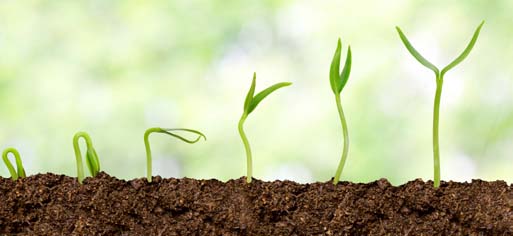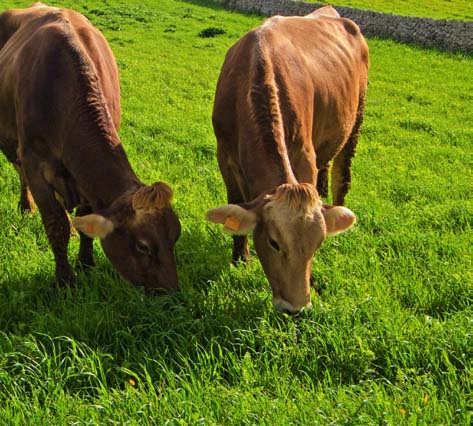Ruminants (such as cows, sheep and goats)
are often considered big contributors to climate change due to their methane (CH4), emissions.
 While this is true, it is actually part of an important natural cycle that has been occurring since the beginning of life, known as the biogenic carbon cycle.
While this is true, it is actually part of an important natural cycle that has been occurring since the beginning of life, known as the biogenic carbon cycle.
Biogenic Carbon Cycle
The biogenic carbon cycle
focuses on the ability of plants to absorb and sequester carbon.
Plants have the
unique ability to remove carbon dioxide (CO2) from the atmosphere and deposit that carbon in their leaves, roots, and stems while releasing oxygen into the atmosphere.

 This process is known as photosynthesis and is fundamental to the biogenic carbon cycle.
This process is known as photosynthesis and is fundamental to the biogenic carbon cycle.
When
plants perform
photosynthesis, carbon is mainly
converted into cellulose, which is a carbohydrate and one of the main building blocks of plants.

Cellulose turns out to be the world’s
most abundant organic compound. It is found in:
Grasses, Shrubs, Crops, Trees, etc.
Cellulose content is particularly high in grasses and shrubs found in marginal lands. These are usually areas where cereal grains and other edible crops for human consumption cannot be grown.
Two-thirds of all agricultural land on the planet is marginal, filled with cellulose-rich grasses that are undigestible for humans.
However, guess who can digest the cellulose found in the grasses and shrubs of marginal lands?

Ruminants ingest this plant material, obtain energy from it and recycle cellulose… and as a result, they also ingest carbon!
Ruminants are made to digest cellulose. They
consume grasses and other plants which are high in cellulose and are capable of
assimilating the carbon stored in cellulose through
enteric fermentation.
They can use this carbon to
cover vital functions such as growth,
milk production and other
physiological and metabolic processes.
As a result of cellulose consumption, livestock lose carbon in the form of CH4 and therefore return the carbon sequestered by plants into the atmosphere.
 After approximately 10 years, CH4 (methane) breaks down (hydroxyl oxidation) and is converted back into CO2 [CH4 –> CO2 + H2O].
After approximately 10 years, CH4 (methane) breaks down (hydroxyl oxidation) and is converted back into CO2 [CH4 –> CO2 + H2O].
Once converted to CO2,
plants can uptake it once more through photosynthesis
and fix that carbon into cellulose….
Read full article
here

![]() While this is true, it is actually part of an important natural cycle that has been occurring since the beginning of life, known as the biogenic carbon cycle.
While this is true, it is actually part of an important natural cycle that has been occurring since the beginning of life, known as the biogenic carbon cycle.
![]() This process is known as photosynthesis and is fundamental to the biogenic carbon cycle.
This process is known as photosynthesis and is fundamental to the biogenic carbon cycle.

![]() After approximately 10 years, CH4 (methane) breaks down (hydroxyl oxidation) and is converted back into CO2 [CH4 –> CO2 + H2O].
After approximately 10 years, CH4 (methane) breaks down (hydroxyl oxidation) and is converted back into CO2 [CH4 –> CO2 + H2O].